Articular cartilage regeneration by activated skeletal stem cells
- PMID: 32807933
- PMCID: PMC7704061
- DOI: 10.1038/s41591-020-1013-2
Articular cartilage regeneration by activated skeletal stem cells
Abstract
Osteoarthritis (OA) is a degenerative disease resulting in irreversible, progressive destruction of articular cartilage1. The etiology of OA is complex and involves a variety of factors, including genetic predisposition, acute injury and chronic inflammation2-4. Here we investigate the ability of resident skeletal stem-cell (SSC) populations to regenerate cartilage in relation to age, a possible contributor to the development of osteoarthritis5-7. We demonstrate that aging is associated with progressive loss of SSCs and diminished chondrogenesis in the joints of both mice and humans. However, a local expansion of SSCs could still be triggered in the chondral surface of adult limb joints in mice by stimulating a regenerative response using microfracture (MF) surgery. Although MF-activated SSCs tended to form fibrous tissues, localized co-delivery of BMP2 and soluble VEGFR1 (sVEGFR1), a VEGF receptor antagonist, in a hydrogel skewed differentiation of MF-activated SSCs toward articular cartilage. These data indicate that following MF, a resident stem-cell population can be induced to generate cartilage for treatment of localized chondral disease in OA.
Conflict of interest statement
Competing interests
The authors declare no competing interests.
Figures


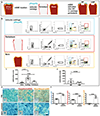



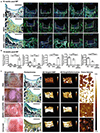
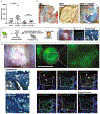
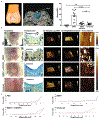
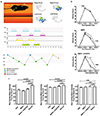
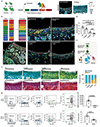

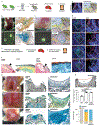
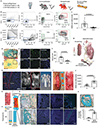
Comment in
-
Cartilage repaired by resident stem cells in an OA model.Nat Rev Rheumatol. 2020 Oct;16(10):537. doi: 10.1038/s41584-020-0501-6. Nat Rev Rheumatol. 2020. PMID: 32873967 No abstract available.
-
'Actum ne agas'.Osteoarthritis Cartilage. 2021 Mar;29(3):300-303. doi: 10.1016/j.joca.2020.12.010. Epub 2020 Dec 31. Osteoarthritis Cartilage. 2021. PMID: 33387652 No abstract available.
References
-
- Rahmati M, Mobasheri A & Mozafari M Inflammatory mediators in osteoarthritis: a critical review of the state-of-the-art, current prospects, and future challenges. Bone 85, 81–90 (2016). - PubMed
-
- Marques-Rocha JL et al. Noncoding RNAs, cytokines, and inflammation-related diseases. FASEB J. 29, 3595–3611 (2015). - PubMed
-
- Hoemann CD et al. Chondroinduction is the main cartilage repair response to microfracture and microfracture with BST-CarGel: results as shown by ICRS-II histological scoring and a novel zonal collagen type scoring method of human clinical biopsy specimens. Am. J. Sports Med 43, 2469–2480 (2015). - PubMed
Publication types
MeSH terms
Grants and funding
- S10 OD021514/OD/NIH HHS/United States
- K99 AG049958/AG/NIA NIH HHS/United States
- R01 DE026730/DE/NIDCR NIH HHS/United States
- HHMI/Howard Hughes Medical Institute/United States
- R01 AR071379/AR/NIAMS NIH HHS/United States
- U01 HL099776/HL/NHLBI NIH HHS/United States
- R21 DE024230/DE/NIDCR NIH HHS/United States
- R00 AG049958/AG/NIA NIH HHS/United States
- R01 DE027323/DE/NIDCR NIH HHS/United States
- T32 GM119995/GM/NIGMS NIH HHS/United States
- U24 DE026914/DE/NIDCR NIH HHS/United States
- R21 DE019274/DE/NIDCR NIH HHS/United States
- R01 GM123069/GM/NIGMS NIH HHS/United States
- R56 DE025597/DE/NIDCR NIH HHS/United States
- R01 DE021683/DE/NIDCR NIH HHS/United States
LinkOut - more resources
Full Text Sources
Other Literature Sources
Medical
Molecular Biology Databases

